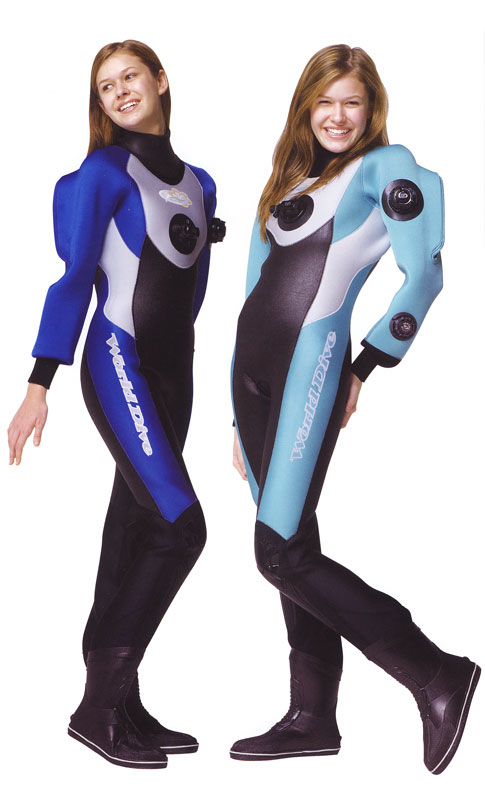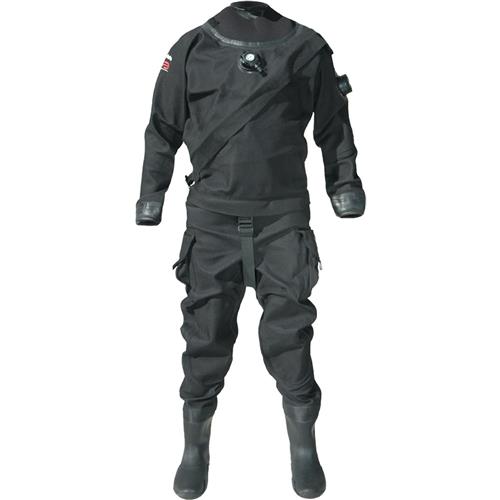


Time to switch to Dry Suits
Posted by sevenseas on 2020年10月31日Hello Guys! What are you guys doing for Halloween? You better watch out your back. There might be something spooky right behind you trying to scare you hahaha.
By the way, it has been getting colder these days, and the winter is just around the corner. The water might be too chilly for wetsuits to dive with. It is time to switch to drysuits!!
Do you guys know what the drysuit is? Of course, those who dive during wintertime know what it is, but there are so many people out there who just dive during summertime and have never tried it before. In this blog, I would like to talk about what the drysuit is and what kind of drysuits are there to wear, and I hope this blog encourages you to dive during the cold season.
To get started, let’s talk about wetsuits that all of you are familiar with. As the name of it says, the wetsuit allows water to get inside of the suits, and the body gets wet. By doing so, it creates a thin layer of water, and the water is warmed up by our body heat. The warm water layer then stays inside of the wet suit. This is how the wetsuit keeps us warm under the water. Unlike the wetsuit, a drysuit keeps you dry due to the tight seal around the neck and the wrists. Instead of creating the layer of water, it creates the layer of air or gas, and the air or gas will be warmed up by the heat generated by the body. In terms of the efficiency of insulation, the air or gas is much greater than the water. On top of that, there is no chance that the body will be exposed to the cold water, except the head and hands.

(what they are wearing is the neoprene drysuit. We prefer the neoprene one because of how easy they are to use.)
Now, you all know the basic about the drysuit. The next thing you need to know is types of the drysuits. There are mainly 2 different types of drysuits that you can choose from. The one is made out of neoprene material. This material is very familiar to the most of you. It is the same material used for wetsuits. The other one is membrane known as a shell or tri-laminate. It is a very thin material. What are differences between two? There are some pros and cons for both materials. The neoprene is very think, and its thickness can be adjustable due to the your preference. Because of that, you don’t really have to wear clothes inside of the drysuit. The drysuit itself actually helps warm you up, and it is also very durable. However, this material limits your movement because of the thickness of it. On the other hand, the membrane is more flexible and lets you move comfortably. This is one of the reason why technical divers choose to wear this type of the drysuit. If you see the flip side of it, the material doesn’t have any functionality to help you stay warm. It is just a layer that isolates the body from the cold water. Therefore, you have to have thick layers of clothes underneath. It is also not as durable as the neoprene material, so you have to handle it carefully.

the image from https://www.leisurepro.com/p-pindse2/pinnacle-evolution-2-trilaminate-cordura-mens-drysuit
(This is the membrane type drysuit. Recreational divers don’t really use it.)
This blog is getting longer, so I call it right here. In the next blog, let me talk about which type is right for you and how to choose.
I will see you next blog! Happy Halloween!! Dive more, dive safely through education!!!
セブンシーズ世田谷本店
住所:〒157-0064 東京都世田谷区給田3-34-1.1F
Tel:03-3307-3888 Fax:03-3307-4746
Mail:info@sevenseas74.com
HP: http://sevenseas74.com/setagaya/
FBセブンシーズ: https://www.facebook.com/sevenseas74/
Instagram: https://www.instagram.com/sevenseas.saki/
営業時間:12:00~18:00
定休日:火曜日(ツアー不在時有り)
Submitted in: SevenSeas世田谷スタッフブログ |











